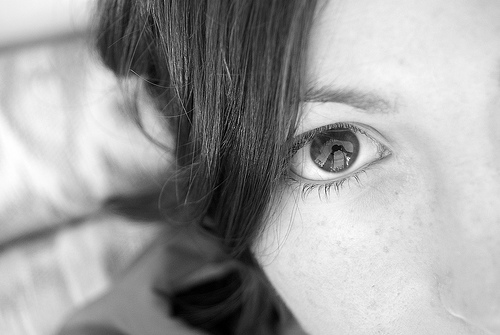Learning how to photograph people can be intimidating at first. Not only are you trying to ensure you have the correct camera settings but you have to keep an eye on your background, all of the people in the shot and remember what you’ve learned about portrait photography techniques.
Preparation Check List
Success in portrait photography is often about the amount of preparation you put in to it beforehand. Louis Pasteur said “Chance favors the prepared mind”; and that is most definitely true with portrait photography. There is too much to concentrate on to leave too much to chance.
| Talk | If someone has asked you to take their photograph, find out what they had in mind. Make sure you give them what they want before you start to work on your own ideas. If they are paying you they probably won’t thank you for producing some creatively abstract work that is nothing like what they had in mind. |
| Location | If you are shooting on location, make sure you go there beforehand. Don’t rely on memory or the hope that nothing will have changed since your last visit. If you just show up, don’t be surprised if they’ve concreted over the field you were going to use or built something in front of the tree you favored!Walk around your location finding the areas you’ll use. Pre-visualize the model posing in the location. Imagine the camera angles, the post-shoot effects you’ll add. Imagine what they’ll be wearing and how you’d like the clothes to hang. |
| Equipment | Whatever equipment you’re taking, check it out a few days before and also on the same day. Make sure it all works. Check your batteries are fully charged and your memory cards ready for use. Ensure you have any cables, flash sync sensors, tripods, stands, filters, lenses etc that you are going to need. Clean anything that needs to be cleaned. It’s a good idea to write yourself a check list ahead of time so you can check it all off. |
| Money | Do you need cash for ticket entry, parking, food? |
| Permissions | If you are photographing on public or private land – do you need to ask permission first? |
| Timing | If you’re going to be shooting outside you need to know where the sun will be for your chosen shooting angles. You could use SunCalc to do this or find an app for your smart phone. There’s even a way to use an ordinary pocket watch – but it’s not so high tech! |
| Model Release | You may need a model release form. Check out this article for more about this. |
* This list is not exhaustive – consider other things too *
Dreamtime
Before you set out on the shoot (preferably at least a few days beforehand) find somewhere quiet, sit down and close your eyes. Start to imagine the shoot. Imagine the poses. Imagine the backgrounds. Imagine how you will talk to your model(s). See the quality of the light and the lens aperture you’re going to be using.
Albert Einstein is said to have spent time every day day-dreaming in the park. He would use this time to come up with creative ideas and explore the pictures in his head. If it’s good enough for Einstein, it’s probably good enough for you!
The last thing you want to be doing with a model (whether amateur or professional), friend or client is to be saying ‘um … errr … let’s try over there and see how that looks!’. There’s nothing wrong with spontaneously spotting an opportunity for a great photo and using it but most of your locations and poses should be pre-chosen and pre-visualized so you can concentrate more on the composition and technique.
How to Take Portraits — Getting More Ideas
So maybe you’re running short of ideas. You need poses and locations. Consider buying fashion magazines. Some of the world’s best portrait photographers shoot for fashion magazines. Check out their poses, their use of lighting, the positioning within locations.
Take a look at the paintings of old masters and ancient statues. It may sound old fashioned but adding a classical pose to a shot will help create a timeless photograph that could be treasured for the person’s who life.
Another thing to learn is how to photograph people who have no idea what to do with their hands. Hands are often overlooked at the time of the shoot and can make a real difference to the final photograph.
Look out for ideas on how to take portraits of more than one person in the same shot. See how other photographers do it. Notice in particular how they position the heads. Rarely will all the heads be at the same height. Heads will be arranged so that they flow through the scene in a pleasing manner.
Portrait Photography Techniques
So now we get to the day of the shoot. There is someone standing in front of you and you need to tell them what to do.
- First, you need to be calm and reassuring. Most people hate having their photo taken. If you are nervous you’ll pass this one and their expressions will show it. One of the best portrait photography techniques you can learn is how to relax people who are nervous.
- If you have researched the location before and pre-visualized the poses, this part will actually be pretty easy. Take in the location. Set up your poses. And click away.
- Remember the hands: always be aware of the hands.
Remember that it’s pretty normal for photographers to be unhappy with the work they do. Some photographers take hours and hours just to get one decent photograph. Don’t beat yourself up too much if the photos aren’t as good as you first hoped. Your ability will improve with experience, practice and time.
When it comes to becoming great at something, it often pays to remember the advice of this great man:
This article’s thumbnail image was taken by Flickr user Lali Masriera.

